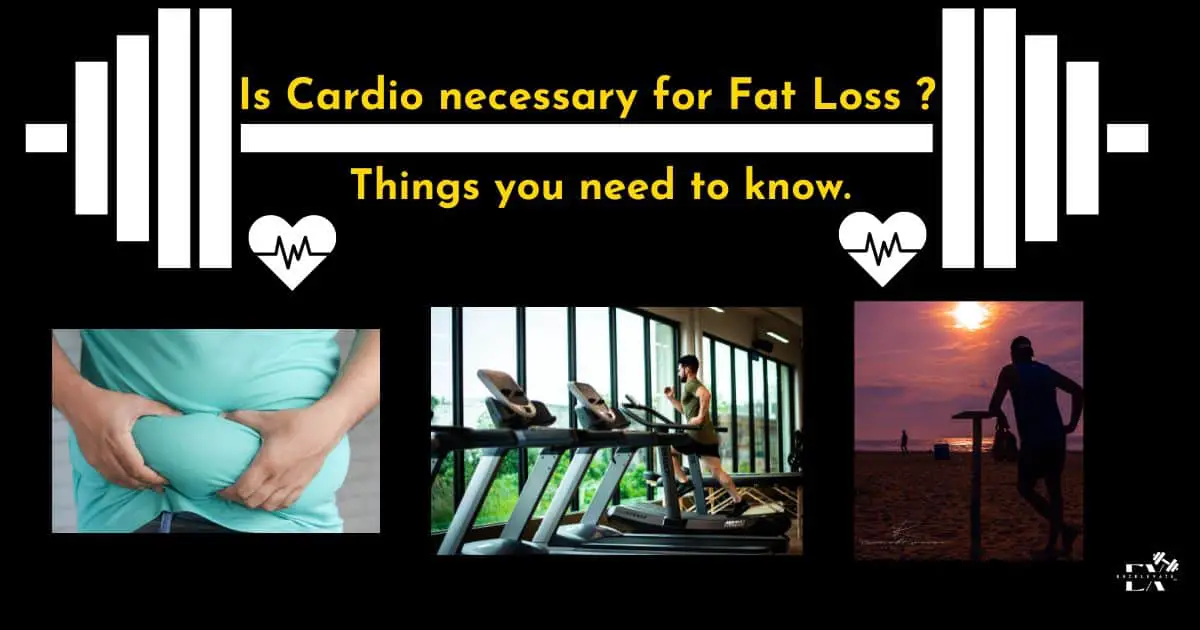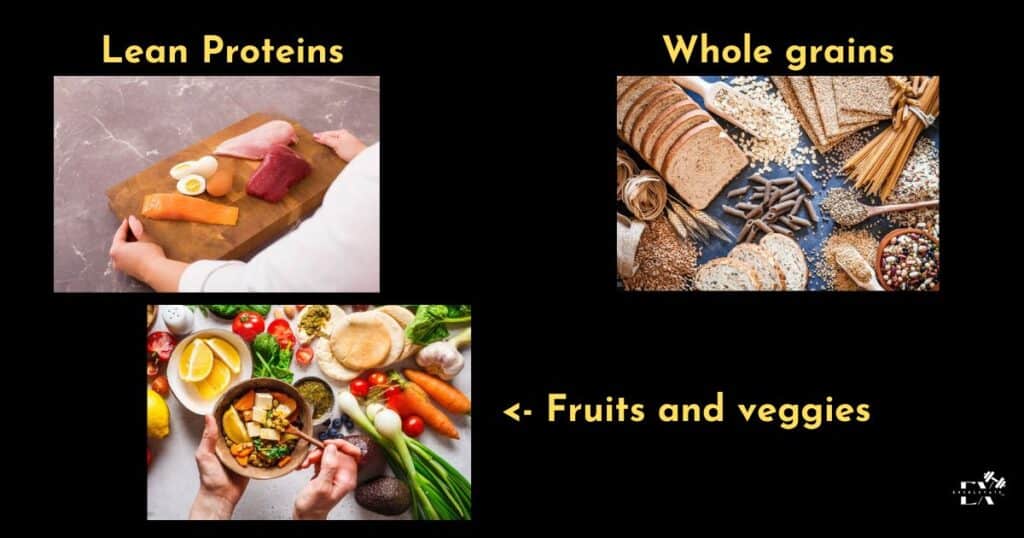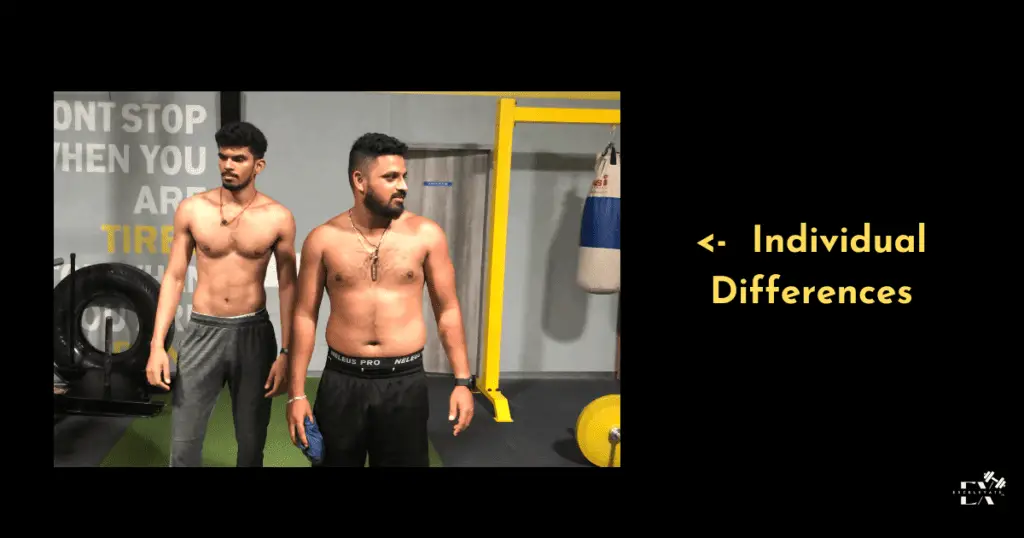
Cardiovascular exercise, commonly known as cardio, has long been associated with weight loss and improved overall health. When it comes to shedding those extra pounds, many people turn to cardio as an essential component of their fitness routine.
But what exactly is the relationship between cardio and fat loss? And why is it important to understand this connection?
Cardiovascular exercise refers to any physical activity that elevates your heart rate and engages large muscle groups over an extended period.
Running, cycling, swimming, and brisk walking are common forms of cardio. While cardio is often linked to fat loss, it’s crucial to comprehend the role it plays in achieving weight loss goals and maintaining overall health.
Understanding the connection between cardio and fat loss is essential for several reasons. First and foremost, cardio exercises help create a calorie deficit by burning calories.
By expending more energy than you consume, you encourage your body to tap into stored fat for fuel, ultimately leading to fat loss.
Furthermore, cardio workouts offer numerous benefits beyond fat loss. They improve cardiovascular health, strengthen the heart and lungs, boost endurance, and even aid in stress reduction.
Understanding the broader impact of cardio on overall health can provide the motivation and appreciation necessary to incorporate it into your fitness routine.
In the following sections, we will delve deeper into the specifics of cardio exercise and its relationship to fat loss. We will explore the different types of cardio workouts, examine the mechanisms by which cardio aids in fat loss, and discuss the importance of balancing cardio with other forms of exercise for optimal results. By the end, you’ll have a comprehensive understanding of the role of cardio in weight loss and overall health.
Understanding Fat Loss
When it comes to achieving weight loss goals, understanding the basics of fat loss is crucial. Fat loss occurs when the body burns more calories than it consumes, resulting in a calorie deficit. Let’s explore the key elements of fat loss and how different approaches play a role in achieving this goal.
Calorie Deficit and Energy Expenditure
Fat loss primarily relies on creating a calorie deficit. This means consuming fewer calories than your body needs to maintain its current weight. When you’re in a calorie deficit, your body taps into its fat stores to make up for the energy shortfall. Cardiovascular exercise plays a significant role in creating this deficit by burning calories and increasing energy expenditure.
Role of Diet and Nutrition
While cardio exercise aids in calorie burning, the role of diet and nutrition cannot be overlooked. To achieve fat loss, it’s essential to follow a balanced, calorie-controlled diet. A nutrient-rich diet provides the necessary fuel for workouts while supporting overall health. Incorporating lean proteins, whole grains, fruits, vegetables, and healthy fats can optimize fat loss efforts.

Different Approaches to Fat Loss
Fat loss can be achieved through various approaches. Dieting focuses on calorie restriction and adjusting macronutrient ratios. Strength training helps build lean muscle mass, which increases resting metabolic rate and enhances fat burning. Cardiovascular exercise contributes to calorie expenditure, promotes heart health, and aids in fat loss. Combining all three approaches—dieting, strength training, and cardio—can yield the best results, as they complement each other and address different aspects of fat loss.
What is Cardiovascular Exercise?
Cardiovascular exercise, commonly referred to as cardio, is a type of physical activity that elevates your heart rate and engages large muscle groups for an extended period. It is an integral part of many fitness routines and offers a wide range of benefits beyond fat loss. Let’s explore what cardiovascular exercise entails and the advantages it provides.
Definition and Types of Cardiovascular Exercises
Cardio exercises involve repetitive, rhythmic movements that increase your heart rate and breathing. Popular forms of cardio include running, cycling, swimming, dancing, rowing, and brisk walking. These activities help elevate your heart rate and keep it sustained for a significant duration, providing an effective cardiovascular workout.

Benefits of Cardio Beyond Fat Loss
Cardiovascular exercise offers a host of benefits that go beyond shedding pounds. Firstly, it improves heart health by strengthening the heart muscle and enhancing circulation. Regular cardio workouts reduce the risk of heart disease, lower blood pressure, and improve cholesterol levels.
Cardio also acts as a powerful stress reducer. Engaging in aerobic exercise releases endorphins, the feel-good hormones, which can help alleviate symptoms of anxiety and depression, improve mood, and promote mental well-being.
The Link Between Cardio and Fat Loss
Cardiovascular exercise, or cardio, has long been associated with fat loss. But how exactly does cardio contribute to shedding those unwanted pounds? Let’s explore the link between cardio and fat loss, focusing on the ways in which it helps create a calorie deficit, increases energy expenditure, and impacts metabolism.
Creating a Calorie Deficit
Cardio plays a vital role in creating a calorie deficit, which is essential for fat loss. By engaging in cardio workouts, you burn calories and expend energy. When you consistently burn more calories than you consume through a combination of exercise and diet, your body turns to stored fat as a source of fuel, leading to fat loss. Cardio exercises such as running, cycling, or high-intensity interval training (HIIT) can be particularly effective in creating a calorie deficit.
Increased Energy Expenditure
Cardio workouts elevate your heart rate and require significant energy expenditure. Compared to other forms of exercise, cardio tends to burn a higher number of calories per session. Longer cardio sessions or higher-intensity workouts can further increase energy expenditure. The more energy you expend during cardio, the greater the potential for fat burning.
Impact on Metabolism and Fat Burning
Cardiovascular exercise can have a positive impact on your metabolism, both during and after your workout. Cardio elevates your metabolic rate during the exercise session, causing your body to burn more calories. Additionally, regular cardio training can increase your basal metabolic rate (BMR), which is the number of calories your body burns at rest. This means that even when you’re not exercising, your body becomes more efficient at burning fat.
Factors to Consider for Optimal Fat Loss
When it comes to achieving optimal fat loss, it’s important to consider various factors that can impact your progress and overall success. Understanding these factors can help you tailor your approach to suit your individual needs and maximize your results. Let’s explore three key factors to consider for effective fat loss.
Individual Differences
Factors such as metabolism, body composition, and genetics can greatly influence fat loss. Metabolism refers to how your body processes and uses energy. Some individuals naturally have a faster metabolism, making it easier for them to burn calories and lose fat.
Body composition, including muscle mass and fat distribution, also plays a role in fat loss. Additionally, genetics can influence how your body responds to exercise and dietary changes. Recognizing these individual differences can help you set realistic goals and adjust your approach accordingly.

Combining Cardio with Strength Training
While cardio is often associated with fat loss, combining it with strength training can yield even better results. Strength training helps build lean muscle mass, which increases your basal metabolic rate (BMR). A higher BMR means your body burns more calories at rest, aiding in fat loss.
Additionally, strength training enhances overall body composition, giving you a toned and defined appearance. By incorporating both cardio and strength training into your routine, you can optimize fat loss and achieve a balanced physique.

Overtraining and Rest and Recovery
While exercise is important for fat loss, it’s equally important to avoid overtraining. Overtraining happens when you exceed your body’s limits without giving it enough time to rest and recover adequately. This can result in exhaustion, diminished performance, and higher chances of getting injured.
Adequate rest and recovery are essential for your body to repair and rebuild after workouts. It’s important to listen to your body, schedule rest days, and prioritize quality sleep to optimize fat loss and overall well-being.
Is Cardio Necessary for Fat Loss?
The question of whether cardio is necessary for fat loss has been the subject of debate among fitness enthusiasts and experts. Let’s explore different perspectives and opinions, debunk common misconceptions, and consider alternative approaches to fat loss.
Examining Different Perspectives
Opinions on the role of cardio in fat loss vary. Some argue that cardio is essential due to its calorie-burning nature, while others believe that focusing solely on cardio may not be necessary for achieving fat loss goals. It’s important to consider individual factors, preferences, and goals when determining the role of cardio in your own fitness journey.
Clearing Up Misconceptions about Cardio and Fat Loss
One common misconception is that cardio is the only way to lose fat. While cardio can create a calorie deficit and aid in fat loss, it’s not the sole determining factor. Diet, strength training, and overall energy balance also play crucial roles.
Additionally, another misconception is that long-duration, steady-state cardio is the most effective. In reality, incorporating high-intensity interval training (HIIT) or weightlifting can be equally, if not more, effective in burning fat and improving body composition.
Considering Alternative Approaches
While cardio can be beneficial for fat loss, alternative approaches can also be effective. Strength training helps build lean muscle mass, which boosts metabolism and aids in fat burning. Prioritizing a balanced, nutrient-rich diet and focusing on overall energy balance is equally important. Combining different forms of exercise, such as resistance training, HIIT, and cardio, can provide a well-rounded approach to fat loss.
Making the Most of Cardio Workouts
Cardiovascular exercise, or cardio, can be an effective tool for fat loss and overall fitness. To maximize the benefits of your cardio workouts, it’s important to determine the right type and intensity, incorporate interval training, and stay motivated and consistent. Let’s explore these strategies to make the most of your cardio routines.
Determining the Right Type and Intensity
Different types of cardio exercises offer varying benefits. Consider choosing activities that you genuinely enjoy and that closely align with your specific fitness goals. Whether it’s running, cycling, swimming, or dancing, finding an activity you love increases the likelihood of staying consistent.
Additionally, consider the intensity of your workouts. Higher-intensity cardio, such as interval training, can be more time-efficient and effective for fat loss compared to steady-state cardio.
Incorporating Interval Training
Interval training involves alternating periods of high-intensity effort with periods of lower intensity or rest. This approach can boost calorie burn, increase cardiovascular fitness, and enhance fat loss. High-intensity intervals challenge your body to work harder and can lead to an “afterburn” effect, where your body continues to burn calories even after your workout.
Staying Motivated and Consistent
Consistency is key to seeing results with cardio workouts. Set achievable goals, monitor progress, and stay motivated. Mix up your routine with different activities and variations to keep things interesting. Consider finding a workout buddy or joining group classes for added accountability and support. Reward yourself for reaching milestones and prioritize self-care to prevent burnout.
Balancing Cardio and Overall Health
While cardio exercise is often associated with fat loss and improved cardiovascular fitness, it’s important to consider the broader health benefits and find a balance between cardio and other forms of exercise. By incorporating other healthy lifestyle habits alongside cardio, you can enhance your overall well-being. Let’s explore how to strike a balance for optimal health.
Considering the Broader Health Benefits
Cardiovascular exercise offers numerous benefits beyond fat loss. It improves heart health, boosts circulation, and strengthens the cardiovascular system. Regular cardio workouts can also enhance mood, reduce stress, improve sleep quality, and increase energy levels. Recognizing these broader health benefits helps to appreciate the importance of cardio for overall well-being.
Finding a Balance with Other Forms of Exercise
While cardio is beneficial, it’s essential to incorporate other forms of exercise as well. Strength training helps build lean muscle mass, improves bone density, and enhances overall body composition. Flexibility and mobility exercises, such as yoga or Pilates, promote joint health and range of motion. Balancing cardio with other types of exercise creates a well-rounded fitness routine and reduces the risk of overuse injuries.

Incorporating Other Healthy Lifestyle Habits
Cardio alone is not enough for optimal well-being. It’s crucial to incorporate other healthy habits into your lifestyle. Prioritize a balanced and nutritious diet that supports your fitness goals. Get enough sleep to aid in recovery and rejuvenation.
Manage stress through practices like mindfulness, meditation, or engaging in activities you enjoy. Hydrate properly and maintain proper hydration levels throughout the day. By adopting these habits alongside cardio exercise, you create a holistic approach to health and well-being.
Takeaway
In conclusion, understanding the role of cardio in fat loss and overall health is important for achieving your fitness goals. Throughout this article, we have explored key points that highlight the significance of cardio exercise. Let’s recap and emphasize the individuality of fat loss approaches while encouraging readers to find a sustainable and enjoyable exercise routine.
We discussed the basics of fat loss, including calorie deficit and energy expenditure. We explored the role of diet and nutrition, as well as the different approaches to fat loss, including dieting, strength training, and cardio.
We also delved into the benefits of cardio beyond fat loss, such as improved heart health, increased endurance, and stress reduction.
Lastly, we examined factors to consider, including individual differences, the combination of cardio with strength training, and the importance of rest and recovery.
It’s important to understand that fat loss approaches can vary for each individual. Metabolism, genetics, and body composition differ from person to person.
What works for one person may not work for another. It’s crucial to listen to your body, experiment with different approaches, and find what works best for you.
The key to long-term success lies in finding a sustainable and enjoyable exercise routine. Incorporate activities you enjoy and stick to consistently.
It could be a combination of cardio, strength training, and other forms of exercise. By finding a routine that fits your lifestyle and brings you joy, you’re more likely to stay motivated and achieve your fitness goals.
Remember that cardio is just one piece of the puzzle when it comes to fat loss. Embrace the individuality of your journey, experiment with different approaches, and prioritize sustainability and enjoyment in your exercise routine. By doing so, you’ll be well on your way to a healthier, fitter, and happier you.
Thanks for Reading.
Follow us on
FAQ : Is Cardio Necessary For Fat Loss?
Can I cut without cardio?
Yes, it is possible to cut without cardio. While cardio can aid in creating a calorie deficit and contribute to fat loss, it is not the only method. By focusing on a well-balanced diet, strength training, and managing overall energy intake, you can still achieve your goals without incorporating cardio into your routine. Remember, individual preferences and factors should be considered when designing a fat loss plan.
What happens if you only lift weights and no cardio?
If you only lift weights and do not incorporate cardio into your routine, you can still achieve fitness and body composition goals. Weightlifting helps build lean muscle mass, which increases metabolism and aids in fat loss. However, without cardio, you may miss out on cardiovascular fitness benefits and potential calorie burn. It is important to find a balance that suits your goals and preferences.
Does cardio do anything for fat loss?
Yes, cardio plays a significant role in fat loss. It helps create a calorie deficit by burning calories, leading to a reduction in body fat. Cardiovascular exercises increase energy expenditure, boost metabolism, and improve insulin sensitivity, enhancing the body’s ability to burn stored fat. Combining cardio with a balanced diet and strength training can maximize fat loss results.
Which cardio is best for fat loss?
When it comes to fat loss, the best cardio exercise is the one that you enjoy and can consistently do. Whether it’s running, cycling, swimming, or HIIT workouts, the key is to elevate your heart rate and burn calories. High-intensity interval training (HIIT) is particularly effective for fat loss due to its combination of intense bursts of activity and short rest periods. Ultimately, choose a cardio exercise that suits your preferences and fits into your routine for long-term success.
Does walking count as cardio?
Yes, walking can count as a form of cardio exercise. While it may not be as intense as activities like running or cycling, brisk walking can still elevate your heart rate and provide cardiovascular benefits. It can be a low-impact and accessible option for people of various fitness levels. Incorporating regular brisk walks into your routine can contribute to overall cardiorespiratory fitness and support fat loss goals.
